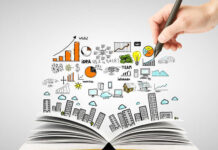In the fast-paced and ever-changing landscape of education, it has become increasingly evident that learning should extend beyond the confines of traditional classrooms. “Beyond the Classroom” is a concept that emphasizes the integration of real-world experiences and practical application into the learning process. In this article, we will explore the importance of experiential learning, its benefits, implementation strategies, challenges, and success stories.
Many students are now seeking alternatives to enhance their learning journey, and some may even consider using external assistance. But, if you need some more online help you may pay someone to do my class or you can take assistance from different useful websites such as Brainly, Chegg, and Scholarly Help.
What is “Beyond the Classroom”?
It refers to the idea of expanding educational experiences beyond the traditional classroom setting. It entails using a variety of approaches and activities that enable students to relate their learning to the world outside of the classroom. This technique tries to provide a better grasp of academic subjects and their applicability in the real world.
The Importance of Going Beyond the Classroom
-
Broadening Horizons
Experiential learning allows pupils to explore new places and ideas. Learning outside of the classroom exposes students to new cultures, industries, and ideas, extending their horizons and cultivating global citizens.
-
Real-World Application
Traditional classroom learning often focuses on theoretical knowledge. However, “Beyond the Classroom” experiences enable students to apply what they have learned in practical scenarios. This application reinforces their understanding and encourages critical thinking and problem-solving skills.
-
Enhanced Learning Experience
Participating in hands-on experiences can considerably improve the learning experience. It creates a dynamic and engaging atmosphere that captivates students’ attention and encourages active engagement, resulting in increased information retention.
Strategies for Implementing “Beyond the Classroom” Learning
-
Field Trips and Excursions
Field tours to museums, historical sites, nature reserves, and industry can provide priceless learning opportunities. These excursions provide students with the opportunity to see personally what they have studied in books, making the subject matter more tangible.
-
Guest Speakers and Workshops
Inviting guest speakers from diverse professions and fields can provide insights into how academic principles can be used in the real world. Expert-led workshops can also help students gain practical skills and knowledge.
-
Community Involvement
Participating in service-learning projects in the local community creates a sense of civic responsibility and empathy. Students get a deeper grasp of social concerns while learning to address genuine community needs.
-
Project-based Education
Project-based Education enables students to collaborate on long-term projects by implementing it. As students face real-world difficulties, this approach stimulates creativity, problem-solving, and critical thinking.
-
Technology Integration
Using technology such as virtual reality, augmented reality, and online simulations, educators can imitate real-world events in the classroom. This integration improves the learning process and holds students’ attention.
Challenges and Solutions Beyond the Classroom Learning
-
Logistics and Safety
Organizing field trips and off-campus activities involves meticulous planning to ensure the safety of students. Schools can handle this by completing extensive risk assessments and acquiring the relevant clearances.
-
Budget Constraints
Funding can be a limiting factor in providing ” outside of the classroom ” experiences. Schools can explore partnerships with local organizations or seek community support to overcome budgetary challenges.
-
Curriculum Alignment
Integrating experiential learning into the curriculum may present difficulties in terms of syllabus coverage. Teachers can achieve a balance between classroom and experience learning by deliberately linking activities with academic goals.
-
Evaluation and Assessment
It might be difficult to assess the impact of experiential learning. Using a combination of qualitative and quantitative evaluation approaches can provide useful insights on its success.
Success Stories and Case Studies
Several educational institutions have successfully implemented “Beyond the Classroom” practices, with favorable results. For example, a school in [XYZ city] started taking students to scientific museums on a regular basis, which resulted in a significant increase in students’ interest in STEM disciplines.
The Role of Teachers and Parents in Facilitating Beyond the Classroom Learning
-
Encouragement and Support
Teachers and parents play a crucial role in motivating students to explore outside of the classroom. Encouragement fosters curiosity and a thirst for knowledge.
-
Creating a Learning Environment
Providing a supportive and interesting learning environment enables students to explore opportunities outside of traditional academics.
The Future of Beyond the Classroom Education
-
Trends and Innovations
Outside of the classroom education will expand and become more successful as a result of continuous innovation.
-
Inclusivity and Accessibility
Efforts to make outside of the classroom opportunities available to all kids will increase educational equity.
-
Global Perspective
Education outside of the classroom will cultivate a global perspective, equipping students for a diverse world.
-
Policy and Advocacy
Policies and campaigning that are effective will be critical in promoting and sustaining outside of the classroom education.
Conclusion
Beyond the Classroom education is a revolutionary technique that helps students reach their greatest potential by supplementing traditional learning methods. It enables students to apply their knowledge, build practical skills, and develop a sense of responsibility towards their communities. Outside of the classroom education will continue to change and shape the leaders and innovators of tomorrow by embracing a forward-thinking perspective.
FAQs
-
How can “Beyond the Classroom” experiences benefit students?
Students can benefit from ” outside of the classroom ” events by widening their perspectives, providing real-world application of knowledge, and improving their overall learning experience.
-
Are field trips expensive to organize?
While field excursions can be costly, schools can decrease expenses by exploring various financing possibilities and forming relationships with local organizations.
-
How can parents support experiential learning initiatives?
Parents can help to support experiential learning efforts by encouraging their children to participate in extracurricular activities and working with schools to provide a well-rounded education.
-
Is experiential learning suitable for all subjects?
Yes, experiential learning may be integrated into a variety of topics, allowing students to apply theoretical principles in real-world contexts.
-
How can schools measure the success of “ outside of the classroom ” initiatives?
The success of ” outside of the classroom ” activities can be measured in schools using a combination of student input, academic performance measures, and qualitative evaluations.
Read Also: Taking a Good Look at Facial Recognition Technology



































































